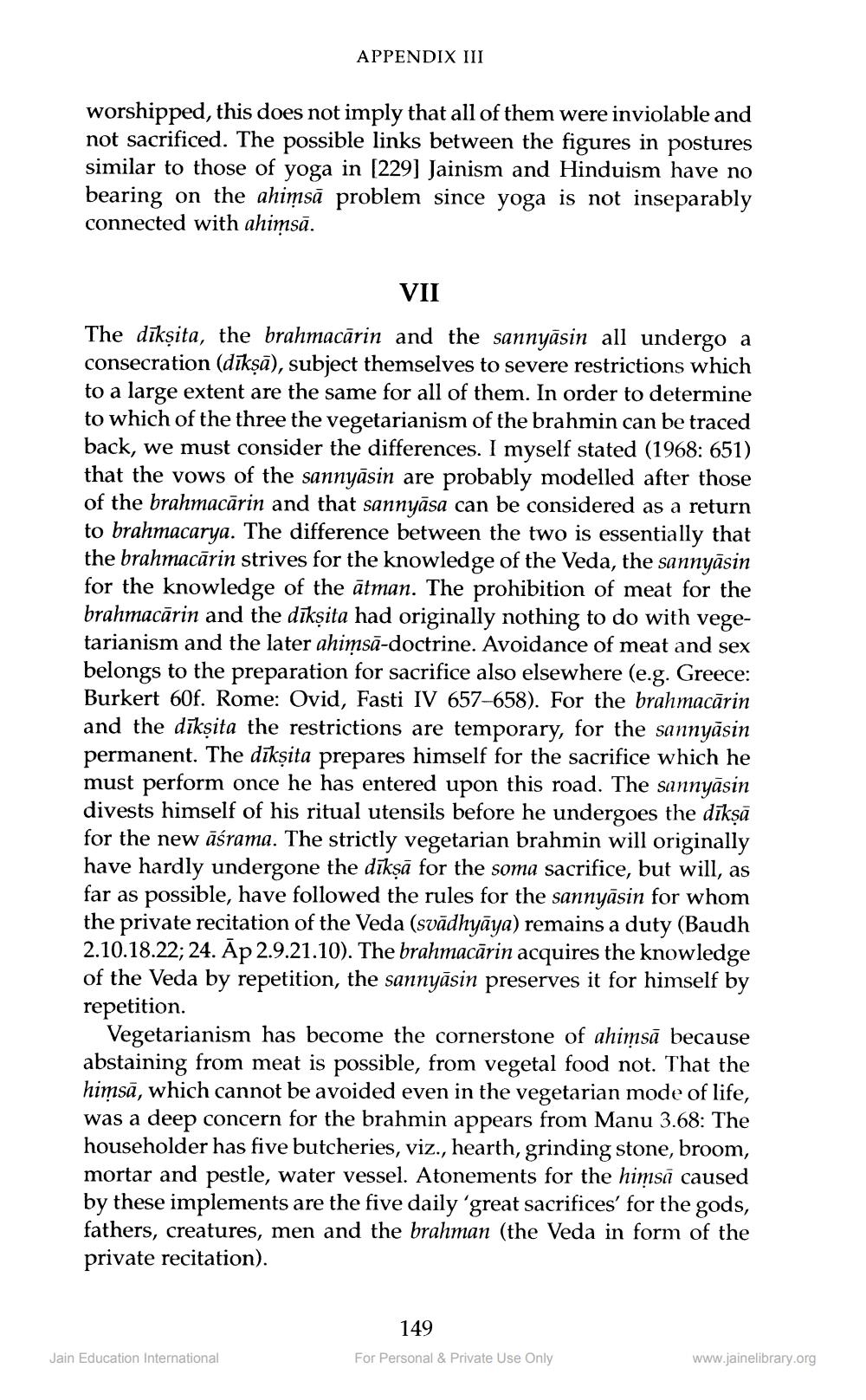________________
APPENDIX III
worshipped, this does not imply that all of them were inviolable and not sacrificed. The possible links between the figures in postures similar to those of yoga in [229] Jainism and Hinduism have no bearing on the ahiņsā problem since yoga is not inseparably connected with ahimsā.
VII
The dīkṣita, the brahmacārin and the sannyāsin all undergo a consecration (dīkņā), subject themselves to severe restrictions which to a large extent are the same for all of them. In order to determine to which of the three the vegetarianism of the brahmin can be traced back, we must consider the differences. I myself stated (1968: 651) that the vows of the sannyāsin are probably modelled after those of the brahmacārin and that sannyāsa can be considered as a return to brahmacarya. The difference between the two is essentially that the brahmacārin strives for the knowledge of the Veda, the sannuāsin for the knowledge of the ātman. The prohibition of meat for the brahmacārin and the dīkṣita had originally nothing to do with vegetarianism and the later ahiņsā-doctrine. Avoidance of meat and sex belongs to the preparation for sacrifice also elsewhere (e.g. Greece Burkert 60f. Rome: Ovid, Fasti IV 657-658). For the brahmacārin and the dīksita the restrictions are temporary, for the sannyāsin permanent. The dīkşita prepares himself for the sacrifice which he must perform once he has entered upon this road. The sannyāsin divests himself of his ritual utensils before he undergoes the dīkņā for the new āśrama. The strictly vegetarian brahmin will originally have hardly undergone the dīkşā for the soma sacrifice, but will, as far as possible, have followed the rules for the sannyāsin for whom the private recitation of the Veda (svādhyāya) remains a duty (Baudh 2.10.18.22; 24. Ap 2.9.21.10). The brahmacārin acquires the knowledge of the Veda by repetition, the sannyāsin preserves it for himself by repetition.
Vegetarianism has become the cornerstone of ahimsā because abstaining from meat is possible, from vegetal food not. That the himsā, which cannot be avoided even in the vegetarian mode of life, was a deep concern for the brahmin appears from Manu 3.68: The householder has five butcheries, viz., hearth, grinding stone, broom, mortar and pestle, water vessel. Atonements for the himsā caused by these implements are the five daily 'great sacrifices' for the gods, fathers, creatures, men and the brahman (the Veda in form of the private recitation).
149
Jain Education International
For Personal & Private Use Only
www.jainelibrary.org




